SFX
by Martin Willey
Some effects were created either using lenses on the camera, or mirrors in front of the camera.

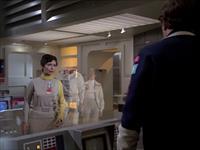
The Lambda Factor. Most "ghost" shots use multiple-exposures, shooting with a static camera against an Alphan wall. The Command Center shot uses the "Pepper's ghost" trick. A glass wall is set at a 45 degree angle in front of the camera, reflecting Sam and Tessa standing to the side of the set against a dark background. It is an old stage trick, since at least the 16th century, popularised in 1862 by John Henry Pepper (1821-1900) for a Charles Dickens play.
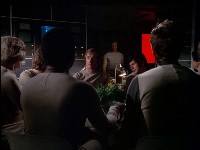
The Troubled Spirit Another Pepper's ghost shot- the ghost of Mateo materializes. The studio lights are turned on Mateo, standing on the side of the set, but seen by the camera reflected on angled glass.
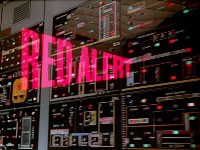
This shot in the Year 2 titles, as the camera moves along the computers, is also a Pepper's ghost effect, quite obviously as there are general reflections on the glass showing the distorted set ceiling. The Red Alert is a stencil over a box with a flashing light (in reverse for this shot, because it is reflected on the mirror; it may not even be angled). The camera is moving with angled glass and flashing light box, all fixed to the camera dolly.
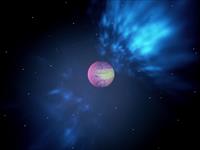
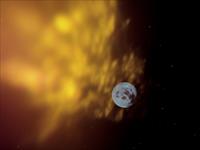

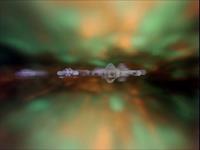
The "space warp" effects, seen in The Exiles, Catacombs Of The Moon, The A B Chrysalis and Space Warp, are also Pepper's ghost effects. Off-camera, abstract artwork on an acetate transparency is illuminated and moved; in front of camera, it is reflected on the angled glass (either one or two glass surfaces are used). Space Warp adds, in multiple exposure, model and live action effects with spinning and distorting mirrors.
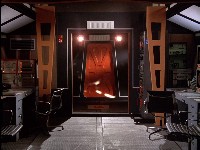
Dragon's Domain The spinning lights were created by a rotating lens in front of the camera reflecting studio lights. Many lighting effects were done with lights, mirrors and lens, because it was cheaper than optical compositing and the result was immediately visible to the camera operator and in the rushes, rather than waiting for processing.
Copyright Martin Willey